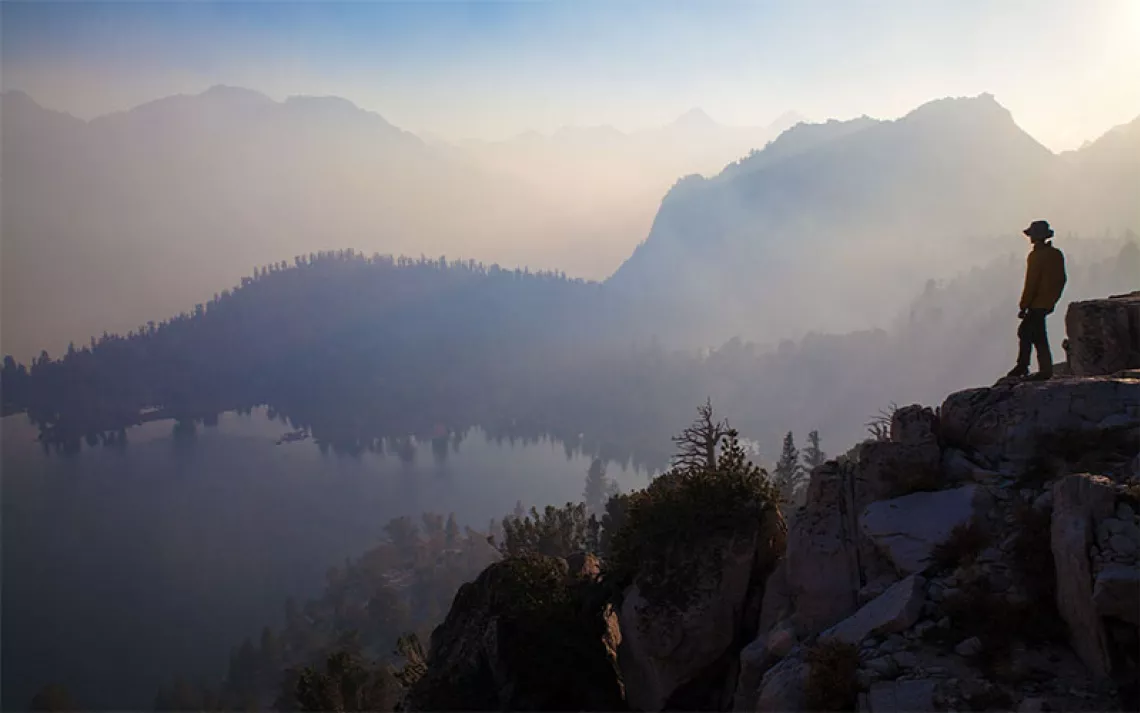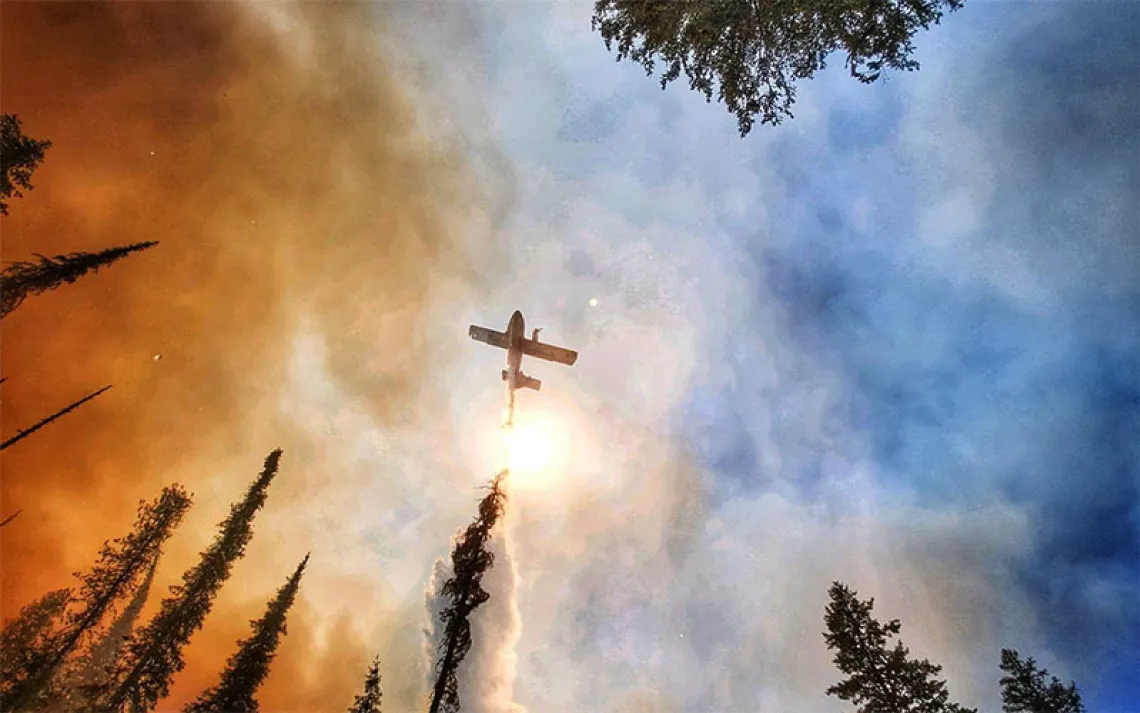The Home of the White Bear
The Arctic National Wildlife Refuge is in danger—again

Cow caribous and calves on the Aichilik River.
|Photos by Rich Wilkins
The leaders first alerted us to their presence with old-man grunts. Emerging from our tents, we watched in awe as the brown tide flooded the hillside, pulled by millennia-old urges. Thousands of caribou from the Porcupine Herd streamed past our camp in Alaska’s Arctic National Wildlife Refuge on two consecutive days; their musk hung heavy in the still air.
These animals formed the vanguard of the fall migration, during which the herd returns south to congregate near the tree line for the rut. After calving in June, the animals fatten up on the refuge’s coastal plain and then begin their 400-mile return trip in late July. In some Brooks Range valleys and passes, the earth looks raw, plowed by the hooves of 90,000 to 170,000 ungulates engaging in North America’s largest land mammal migration.
In its last session, Congress was reviewing a proposal to preserve the caribous’ calving grounds—the famous 1002 Area of the Arctic refuge—as wilderness. The refuge, almost as big as South Carolina, is the setting for life cycles that unfold as they did at the end of the last ice age, 12,000 years ago. The expanse between the Inupiaq village of Kaktovik and the Gwich’in’s Arctic Village, 140 miles due south, harbors the greatest wildlife diversity of any protected area in the circumpolar north. Nourished by summer’s constant daylight, its hardy vegetation supports not only caribou but also bears, wolverines, wolves, eagles, plovers, gyrfalcons, Dall’s sheep, and many other species.
The refuge is also crucial for polar bear survival. It contains the highest concentration of denning sites in Alaska along its 125-mile coastline, the only segment of the state’s 6,500-mile northern coast still closed to drilling. Outside this sanctuary, oil production and seismic exploration often drive female polar bears and their cubs from cozy dens, exposing them to the steel bite of Arctic winter. Any spill—onshore, at pipelines or drill rigs, or offshore, from ships in the now-ice-free Northwest Passage—threatens the food sources of both people and bears.
As early as 13,000 years ago, hunters crossed the then-exposed Bering Land Bridge in search of game. Their descendants still depend on caribou as a way of life, for physical and spiritual sustenance. But data gathered in the past 50 years in the western Arctic show that winter temperatures in this region have increased as much as 7 degrees Fahrenheit and snow cover has diminished proportionately. I kept seeing slumped riverbanks where permafrost had melted, and tinder-dry tundra. Summiting Brooks Range peaks sometimes isn’t worth the effort because wildfire haze obscures the view. Many Inupiat and Gwich’in fear that a warming Arctic and the possible opening of the refuge to oil and gas drilling might send the Porcupine caribou the way of bison in the 19th century.
From its very beginning under the Eisenhower administration, the refuge has sparked political and economic controversy. Of a total of 19 million acres, only 8 million are protected as federally designated wilderness. Congressional authorization is necessary before oil drilling can proceed in the 1002 Area, but with Republicans in control of both houses and Donald Trump in the White House, the refuge is in peril.

The Canning River and Brooks Range in the evening sun.
My personal history with this region spans more than two decades. Conducting anthropological fieldwork for the University of Alaska and the National Park Service in the early 1990s, I fell hard for the Arctic. Since then, much of my writing and life have revolved around the land of stunted—or no—trees. Aside from the Grand Canyon, this is my favorite place in the world. I encountered my first wild polar bear here—30 miles from the coast, the farthest inland sighting ever recorded for the refuge. The story of that chance meeting is in Ice Bear, the result of my long obsession with bears and wilderness. Unable to find a book that explains our fascination with the great white bear of the north, I decided to research and write my own.
I was not the least bit surprised to learn that this creature magnetized people and cultures across time. I was very surprised how persistent and widespread some beliefs and attitudes regarding this species have been. For the first time I saw how much the bear has served as a screen onto which we project our fears and desires. In my guiding and my writing about the bear and the Arctic, I continue to face my own. I wonder if, on some subconscious level, I seek out the blighted and rare before they disappear. Many of the clients I guide confess that they want to see this place while there is still time. What we all feel, I’d like to believe, is a mixture of helplessness, guilt, and regret rather than morbid, rubbernecking curiosity. Like conscientious criminals, we are drawn to the scene of a crime, witnesses and perpetrators rolled into one, forever haunted by our deeds and sins of omission. Perhaps, in the great beasts’ presence, we are hoping to somehow be forgiven.
 The Magazine of The Sierra Club
The Magazine of The Sierra Club



